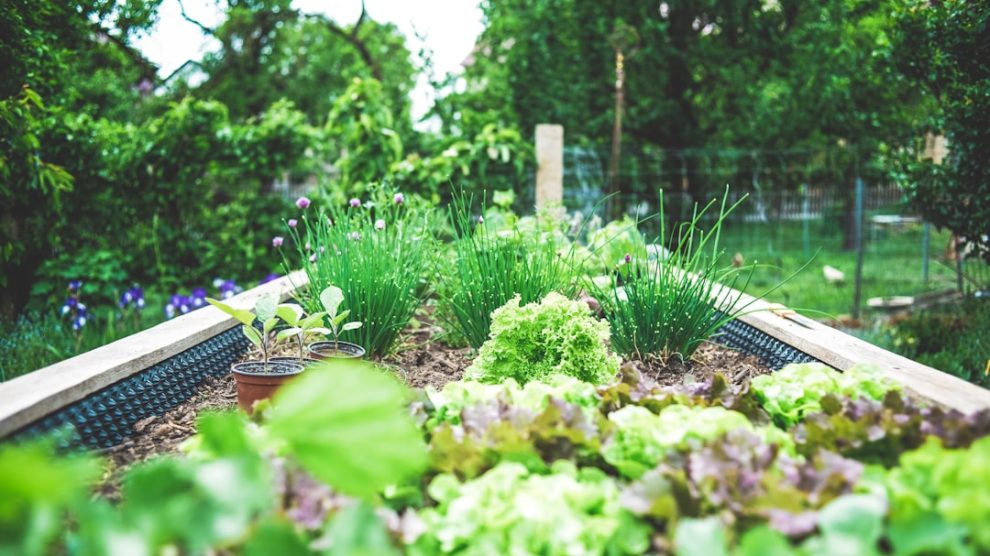Taoism, an ancient Chinese philosophy and spiritual tradition, emphasizes living in harmony with the Tao, or the fundamental nature of the universe. The term “Tao” translates to “the Way,” representing a path of natural order and balance. Central to Taoist thought is the idea that everything in existence is interconnected, and that human beings are an integral part of this vast web of life.
This philosophy encourages individuals to observe and align themselves with the rhythms of nature, promoting a sense of peace and tranquility. The teachings of Laozi, particularly as articulated in the “Tao Te Ching,” provide profound insights into the nature of existence, urging followers to cultivate simplicity, humility, and compassion. In Taoism, the concept of Wu Wei, or “non-action,” plays a crucial role.
This does not imply passivity but rather suggests an approach to life that emphasizes effortless action in accordance with the natural flow of events. By practicing Wu Wei, individuals can achieve their goals without forceful struggle, allowing for a more harmonious existence. This principle can be applied not only to personal life but also to broader societal structures, including urban planning.
By understanding and integrating Taoist philosophy into contemporary contexts, planners and designers can create spaces that resonate with the natural world and foster a sense of community.
Key Takeaways
- Taoist philosophy emphasizes the importance of living in harmony with nature and finding balance in all aspects of life.
- Urban planning can benefit from Taoist principles by prioritizing sustainability, embracing nature, and fostering community connections.
- Balancing yin and yang in urban development involves creating a harmonious blend of natural and built environments, and balancing different aspects of urban life.
- Embracing nature in urban design involves incorporating green spaces, natural elements, and sustainable practices into the urban environment.
- Fostering community and connection in urban spaces can be achieved through creating walkable neighborhoods, public gathering spaces, and promoting a sense of belonging and togetherness.
Applying Taoist Principles to Urban Planning
Embracing Nature in Urban Spaces
By prioritizing the integration of natural elements into urban spaces, planners can create environments that reflect the balance and harmony central to Taoist philosophy. For instance, incorporating green spaces, water features, and native vegetation can enhance biodiversity while providing residents with a connection to nature.
Designing for Flexibility and Adaptability
Moreover, urban planning inspired by Taoism advocates for flexibility and adaptability in design. Just as the Tao teaches that change is a constant aspect of life, urban environments must be designed to evolve over time. This can be achieved through modular designs that allow for alterations based on community needs or environmental changes.
Creating Sustainable and Functional Spaces
By fostering a sense of fluidity in urban development, planners can create spaces that remain relevant and functional for future generations. This approach ensures that urban environments are not only aesthetically pleasing but also sustainable and functional, ultimately contributing to the well-being of both residents and the environment.
Balancing Yin and Yang in Urban Development

The concept of Yin and Yang is fundamental to Taoist philosophy, representing the dualities present in all aspects of life. Yin embodies qualities such as darkness, receptivity, and femininity, while Yang symbolizes light, activity, and masculinity. In urban development, achieving a balance between these opposing forces is essential for creating harmonious environments.
This balance can manifest in various ways, such as integrating quiet, contemplative spaces alongside vibrant, bustling areas. For example, a well-designed urban park can serve as a Yin space, offering tranquility and refuge from the chaos of city life. Conversely, nearby commercial districts can embody Yang energy through lively markets and social interactions.
By thoughtfully considering the interplay between these elements, urban planners can create neighborhoods that cater to diverse needs and preferences. This balance not only enhances the quality of life for residents but also fosters a sense of community by providing spaces for both relaxation and engagement.
Embracing Nature in Urban Design
Embracing nature within urban design is a key tenet of Taoist philosophy that can lead to healthier and more sustainable cities. The integration of natural elements into urban environments not only enhances aesthetic appeal but also contributes to ecological health. Urban forests, green roofs, and vertical gardens are examples of how nature can be woven into the fabric of city life.
These features not only improve air quality but also provide habitats for wildlife, promoting biodiversity within urban settings. Furthermore, incorporating natural water features such as ponds or streams can enhance the sensory experience of urban spaces while serving practical purposes like stormwater management. The presence of water has been shown to have calming effects on individuals, fostering a sense of well-being.
By prioritizing these natural elements in urban design, cities can create environments that resonate with the principles of Taoism, encouraging residents to connect with their surroundings and appreciate the beauty of nature.
Fostering Community and Connection in Urban Spaces
A core aspect of Taoist philosophy is the emphasis on community and interconnectedness. In urban planning, fostering social connections among residents is vital for creating vibrant neighborhoods. This can be achieved through the design of communal spaces that encourage interaction and collaboration.
Parks, plazas, and community gardens serve as gathering places where individuals can come together, share experiences, and build relationships. Moreover, incorporating elements that reflect local culture and history can enhance a sense of belonging among residents. Public art installations, cultural festivals, and local markets can celebrate the unique identity of a community while fostering pride among its members.
By prioritizing these connections in urban design, planners can create environments that not only meet practical needs but also nurture social bonds and a sense of belonging.
Prioritizing Long-Term Sustainability in Urban Planning

Sustainability is a critical consideration in modern urban planning, aligning closely with Taoist principles that advocate for living in harmony with nature. Long-term sustainability involves designing cities that minimize environmental impact while promoting social equity and economic viability. This requires a holistic approach that considers the interconnectedness of various systems within an urban environment.
For instance, implementing renewable energy sources such as solar panels or wind turbines can reduce reliance on fossil fuels while promoting energy independence. Additionally, sustainable transportation options like cycling infrastructure and public transit systems can decrease carbon emissions while enhancing accessibility for all residents. By prioritizing these sustainable practices in urban planning, cities can create resilient environments that thrive in harmony with their natural surroundings.
Integrating Taoist Principles with Modern Urban Infrastructure
Integrating Taoist principles with modern urban infrastructure presents both challenges and opportunities for planners and designers. While contemporary cities often prioritize efficiency and functionality, incorporating elements of Taoism can lead to more holistic approaches that consider human well-being alongside technological advancements. For example, smart city technologies can be employed to enhance connectivity while ensuring that natural elements are preserved and integrated into urban landscapes.
Moreover, designing infrastructure that promotes mindfulness and well-being aligns with Taoist teachings. This could include creating pedestrian-friendly streetscapes that encourage walking and cycling while incorporating green spaces for relaxation and reflection. By blending modern technology with traditional wisdom, urban planners can create environments that support both individual well-being and community cohesion.
Case Studies of Successful Taoist-Inspired Urban Planning Initiatives
Several cities around the world have successfully integrated Taoist-inspired principles into their urban planning initiatives. One notable example is the city of Chengdu in China, which has embraced green infrastructure as a means to enhance livability while preserving natural ecosystems. The city has developed extensive park systems that incorporate native flora and fauna while providing residents with accessible green spaces for recreation and relaxation.
Another example is Singapore’s Gardens by the Bay project, which exemplifies the integration of nature within an urban context. This innovative development features futuristic structures surrounded by lush gardens and water features, creating a harmonious blend of technology and nature. The project not only serves as a tourist attraction but also promotes biodiversity and environmental education among residents.
These case studies illustrate how embracing Taoist principles in urban planning can lead to successful outcomes that prioritize harmony with nature while fostering community connections. By learning from these examples, other cities can explore ways to incorporate similar philosophies into their own development strategies, ultimately creating more sustainable and livable urban environments for future generations.
FAQs
What are Taoist principles for sustainable urban planning?
Taoist principles for sustainable urban planning emphasize harmony with nature, balance, and the interconnectedness of all elements in the environment. This approach seeks to create cities that are in harmony with the natural world and promote the well-being of both people and the planet.
How do Taoist principles influence urban planning?
Taoist principles influence urban planning by promoting the use of natural materials, incorporating green spaces, and designing buildings and infrastructure in a way that respects the natural landscape. This approach also emphasizes the importance of creating a sense of balance and flow within the urban environment.
What are some examples of Taoist-inspired urban planning initiatives?
Examples of Taoist-inspired urban planning initiatives include the incorporation of traditional Chinese garden design principles in urban parks, the use of sustainable materials and building techniques, and the integration of natural elements such as water features and greenery into urban spaces.
How do Taoist principles contribute to sustainability in urban planning?
Taoist principles contribute to sustainability in urban planning by promoting a holistic approach that considers the long-term impact of development on the environment, as well as the well-being of the people who live in urban areas. This approach aims to create cities that are resilient, environmentally friendly, and conducive to a high quality of life for residents.









Add Comment